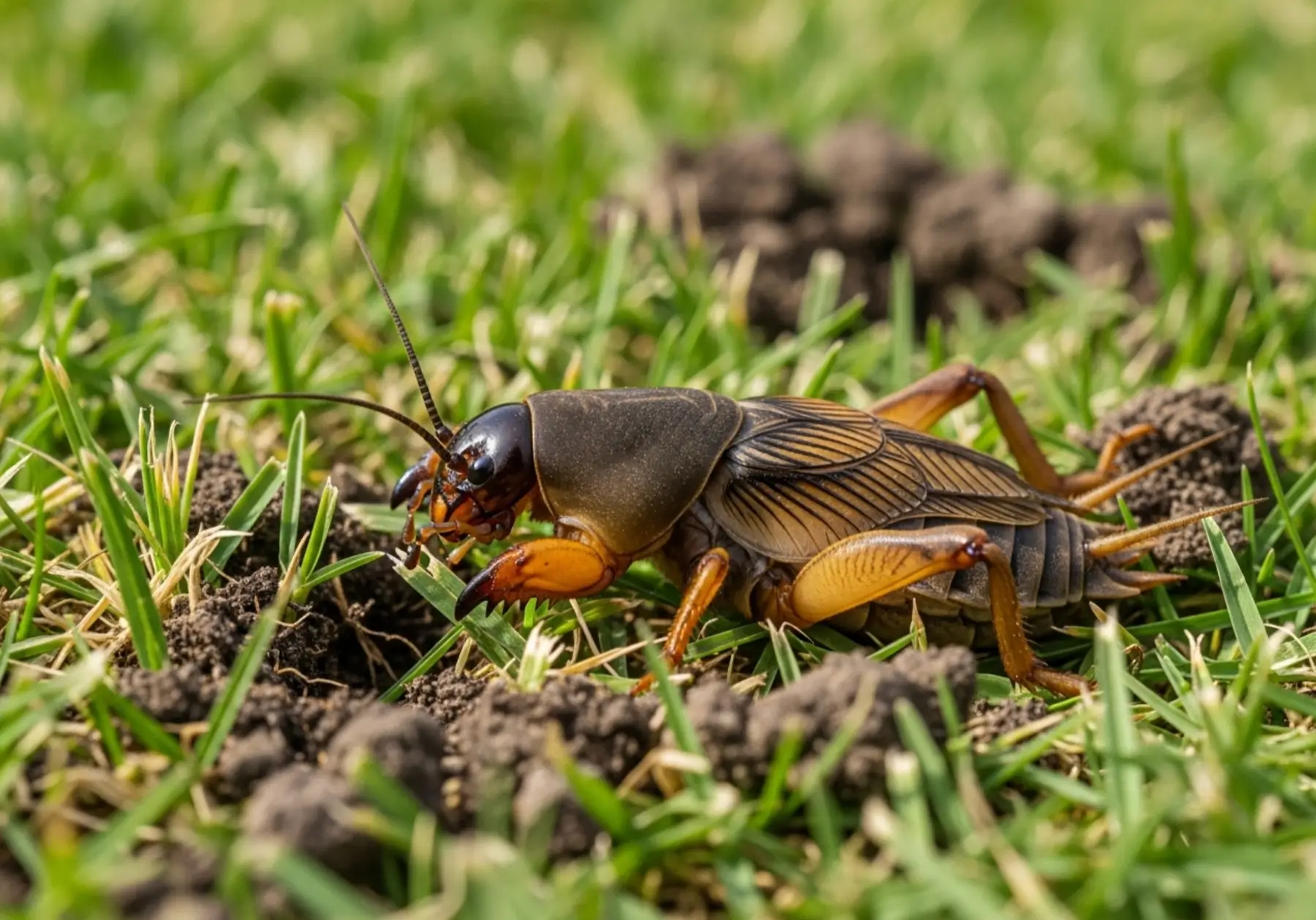
If you’ve noticed soft, spongy soil or patches of dying grass, mole crickets could be to blame. These underground pests are small but mighty—they dig tunnels that damage roots and dry out your soil. Without professional mole cricket control, a healthy lawn can turn patchy and weak in just weeks.
Understanding their habits is the first step toward protecting your yard from these hidden destroyers.
What Are Mole Crickets?
Mole crickets are nocturnal insects that live beneath the surface of your lawn. They dig tunnels with their clawed front legs, feeding on grass roots and stems. Unlike surface pests, they cause damage from below, making them harder to detect until it’s too late.
They thrive in warm, moist conditions—common throughout Texas—and often become active after heavy rain or irrigation.
How to Identify Mole Cricket Damage
Mole cricket infestations often go unnoticed at first. Look for these telltale signs:
- Soft or uneven patches when you walk across your lawn.
- Thinning or yellowing grass that doesn’t respond to watering.
- Small mounds or raised ridges where they’ve tunneled underground.
- Increased bird activity as they feed on the crickets.
If you spot these symptoms, you likely have a mole cricket problem—and it’s time for professional treatment.
Why DIY Treatments Often Fail
Most store-bought products only target surface pests, while mole crickets remain deep underground. Even if you manage to kill a few, eggs and nymphs left behind quickly repopulate the area.
Professional mole cricket control services use specialized products and timing techniques that penetrate the soil, eliminating pests at every life stage for long-lasting results.
The Professional Mole Cricket Control Process
At Anointed Lawn Care, our mole cricket control strategy targets the problem at its source.
Here’s how it works:
- Inspection & Identification: We evaluate your soil and damage pattern to confirm mole cricket activity.
- Targeted Treatment: We apply precise soil treatments designed to reach and eliminate adult crickets and developing larvae.
- Follow-Up Protection: Scheduled reapplications ensure lasting protection and prevent future infestations.
These treatments not only stop current damage but also protect your lawn through the next breeding season.
The Best Time to Treat for Mole Crickets
Timing is crucial. The most effective treatments happen in late spring to early summer, when mole cricket nymphs are young and easier to control.
If you wait until they’re fully grown, they’ll have already caused significant root damage.
Regular monitoring and preventive applications can keep infestations from returning year after year.
How to Prevent Future Infestations
Between professional treatments, you can make your yard less inviting to mole crickets by:
- Avoiding overwatering and improving drainage.
- Reducing thatch buildup through core aeration.
- Keeping grass healthy with balanced fertilization.
- Watching for early signs of soil disturbance after rain.
Healthy, dense lawns naturally resist pests better than stressed or compacted ones.

Mole crickets may be out of sight, but they should never be out of mind. These underground pests can silently destroy your lawn’s root system if left untreated. With professional mole cricket control, you can restore your lawn’s health and prevent future infestations with long-lasting protection.
Don’t wait until the damage is visible—contact Anointed Lawn Care today for expert mole cricket control and get your free quote!









